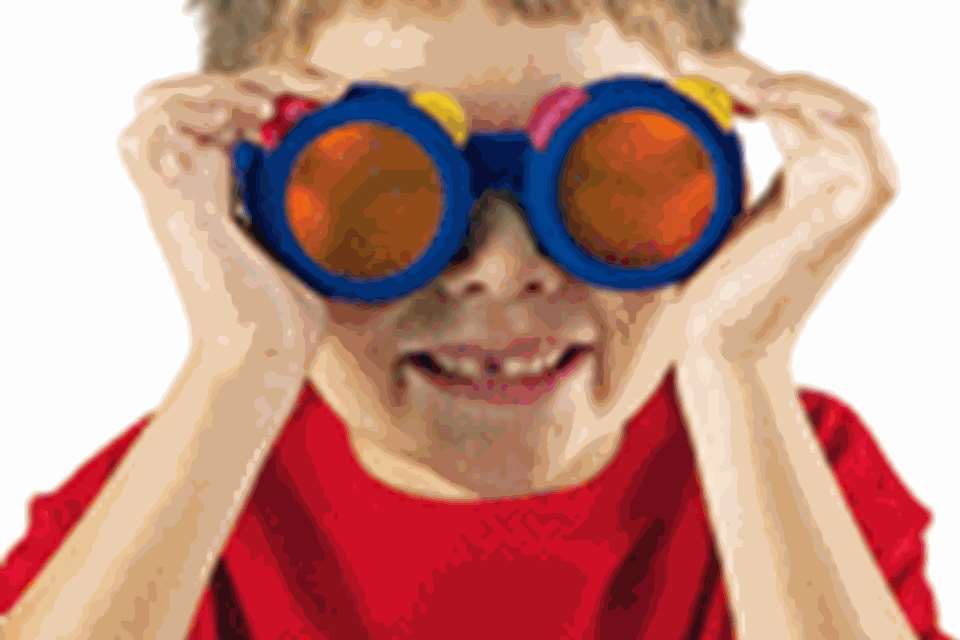EYFS Activities - Let’s explore…colour
Marianne Sargent
Monday, March 21, 2016
Children are being inspired by National Museums Liverpool’s Eye for Colour show. By Marianne Sargent

A visit to the National Museums Liverpool’s Eye for Colour exhibition has inspired three-year-olds from local 1st Steps Nursery in Bootle to find out more about colour and art.
Pre-school room leader Marti Fallon says the children returned from the exhibition buzzing with excitement and interest about how colours are made and wanting to learn more about how artists use colours.
‘The children loved it and gained a great deal from it,’ says Miss Fallon. ‘It was really enjoyable for both staff and children and nearly all activities were suitable for children within the early years. They were low-level, easy to use and very accessible to all ages.’
The exhibition is divided into six areas, each focusing on the various ways that colour shapes our lives and the world around us. Children learn about eyesight and how people see colour, about the colour spectrum and explore colour in relation to culture, nature, food, mood and feeling.
Experiences include looking through the back of a giant eye to see what the eye actually sees before the brain turns it the correct way up, finding out how people in different cultures use colours in different ways, exploring how colour affects taste and the enjoyment of food, and learning about how animals camouflage themselves or use colour to scare others or attract a mate.
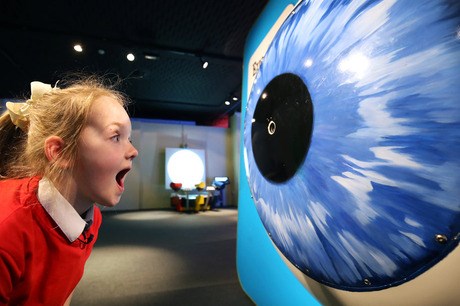
‘Each activity was inviting and children couldn’t wait to explore,’ says Miss Fallon. ‘One of our staff took her son who is only two and he loved it as well. The children looked through the eyes of a dog and were amazed to learn that dogs see in black and white, making them think about their own pets and what they might be able to see.’
A particular favourite was a mood room, a tent that changes colour. Miss Fallon describes how the children sat inside and talked about how different colours made them feel while practising showing their feelings through facial expressions.
The exhibition also has hands-on activities where children can combine colours and create their own art works. The children particularly enjoyed playing with a giant art machine, which involved using lasers to project paint onto an on-screen canvas to create a range of images. They also learned how artists use different types of colour to create their work.
ARTISTIC INSPIRATION
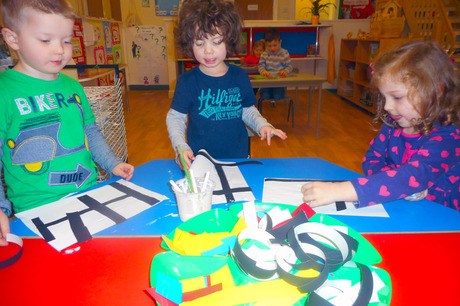
The experience inspired nursery staff to plan a topic about famous artists. ‘When we returned to the nursery we used our Smartboard and books to look at a variety of artists to gain ideas,’ says Miss Fallon. ‘The children really liked Mondrian and we looked at how he used colour and lines within his pictures, creating our own versions of them.’
The nursery plans to go on to focus on a range of other artists, looking at different types of art, making models, painting and mixing colours. ‘These artists include Picasso, creating self-portraits and portraits of familiar people; Van Gogh, focusing on his famous Sunflowers picture, growing our own sunflowers and using these as a focal point to create our own painting; Lowry, looking at how he painted buildings, going on an outing to explore our community, and taking a range of art materials with us; Andy Warhol, creating our own pop art prints of favourite characters and exploring the use of different colours and how colours can be changed; and Kandinsky, looking at abstract art and creating our own versions, talking about shape and how we can use it.
‘Our tracking highlighted mark-making and writing as an area for development and we thought that we could link lots of creative activities with fine and gross motor skill work. We have also planned a parent stay-and-play session to do big art in the garden and will be visiting the Walker Art Gallery to join in with the Big Art for Little Artists programme.
‘The exhibition acted as an introduction to how colour can be used within art but also within our everyday lives,’ adds Miss Fallon. ‘I feel visiting the exhibition has created a great focal point for the children to refer back to, giving them first-hand experience of how colour can be used in a range of ways.’
Lucy Johnson, National Museums Liverpool senior exhibition officer, says she is pleased the exhibition is inspiring its young visitors so much. ‘The fact that 1st Steps are continuing with an art project after their visit is really great to hear because I think that’s something that we would really hope the exhibition would do. Bringing out that idea of creativity and expression is really important.’
Ms Johnson says that although much of the science aspect of the exhibition is aimed to tie in with the Key Stage 2 and 3 curriculum, there are many exhibits that work very well with younger children, particularly those in the early years.
‘One of the key things that we wanted to get out of the exhibition was that it’s very playful as well as educational,’ she explains. ‘It’s a hands-on, fun, interactive exhibition aimed at a family audience. We want the children to get involved. There’s lots of team activities that get them playing together, as well as things they can do on their own.’
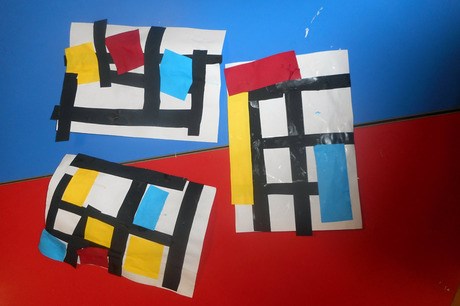
ON SHOW
Eye for Colour is a touring interactive exhibition aimed at children under 12 with 40 hands-on exhibits and interactive displays that aim to help children understand the science of colour and colour in nature, art and everyday surroundings. In 2007 it won the Museums and Heritage Award for best temporary or touring exhibition and has returned home to the World Museum in Liverpool for its tenth anniversary after attracting more than a million visitors across Europe.
The exhibition runs until 4 September 2016. Booking is not necessary and educational groups can just turn up. However, the museum does ask that larger groups phone ahead beforehand to let them know. For more information, visit: www.liverpoolmuseums.org.uk/wml/exhibitions/colour
Artists in residence
Set up an art studio in your early years setting with a range of craft materials to choose from, and display pictures of famous works of art to inspire the children. Provide:
• different types of paper in a variety of colours; poster, sugar, tissue, crêpe
• wallpaper samples and paint colour cards
• different types of paint; acrylic, poster, powder, watercolour
• mixing palettes for children to experiment with combining colours
• different sized brushes, rollers, printers and stamps
• pencils, chalks, pastels, crayons
• scissors, glue and Sellotape
• tubs of objects and items the children can choose from such as feathers, buttons, ribbons, natural objects, cotton wool, string, wool, glitter, sequins and beads
• large tables, easels and chalk boards.
If possible, arrange everything in coloured sections.
RESOURCES
• CBeebies’ Make and Colour interactive activities, games and printable resources, www.bbc.co.uk/cbeebies/makes
• Colour discovery boxes containing tactile objects for very young children and those with special educational needs, www.sensetoys.com
• Light box kit for exploring colour, £89.95 (pictured), www.tts-group.co.uk
• Magnetic board and multicoloured wooden magnets, www.eduzone.co.uk
• Google ‘famous artworks’ to find pictures including The Scream by Edvard Munch, Starry Night by Vincent Van Gogh and Water Lilies by Claude Monet.
MORE INFORMATION
Big Art for Little Artists, www.liverpoolmuseums.org.uk/walker/bigart
Book corner
Colours by Ann and Peter Scott
Interactive book that enables the children to experiment with colour mixing.
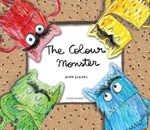 The Colour Monster by Anna Llenas
The Colour Monster by Anna Llenas
A little girl helps a confused monster recognise his feelings.
The Colour Thief by Gabriel Alborozo
A beautiful picture book about the power of environmental colour.
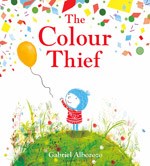 Mouse Paint by Ellen Stoll Walsh
Mouse Paint by Ellen Stoll Walsh
A lighthearted introduction to colour mixing. Three white mice find three jars of paint – red, blue and yellow. They jump in and out and discover some amazing things – things like green, orange and purple.
Children’s Book of Art by Rosie Dickins
Introduces young children to different artists, artworks, styles and techniques. Includes internet links.
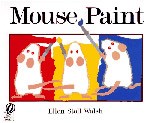 Picasso’s Trousers by Nicholas Allan
Picasso’s Trousers by Nicholas Allan
A fun introduction to Picasso’s work, with pictures and a foldout surprise. People say ‘no’ to Picasso’s ideas but he follows his own creative path.
Tales from Acorn Wood: Colours by Julia Donaldson and Axel Scheffler
Board book for introducing colours to younger children.
Elmer and the Rainbow by David McKee
Elmer the elephant is distressed to find that the rainbow has lost its colours.
Marianne Sargent is a writer specialising in early years education and a former foundation stage teacher and primary and early years lecturer.



